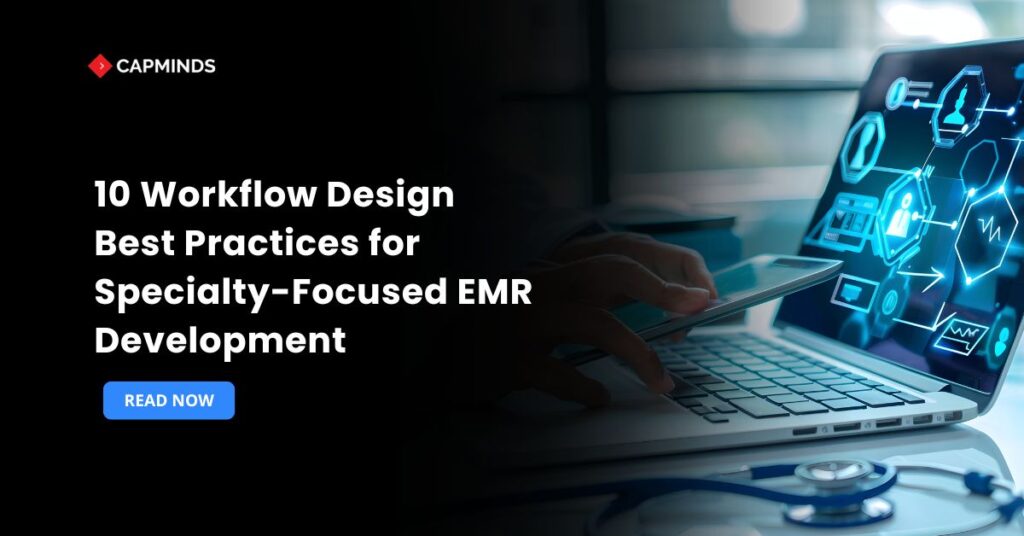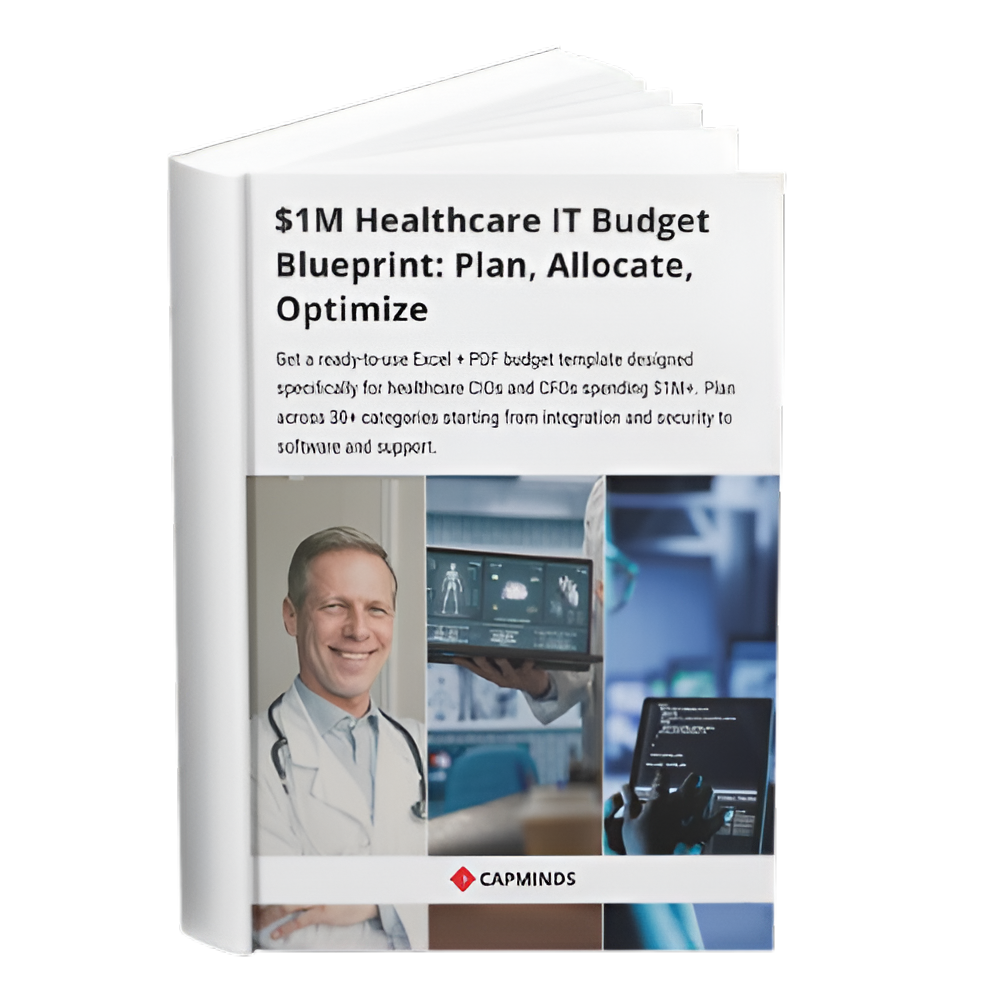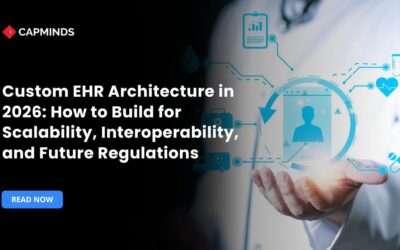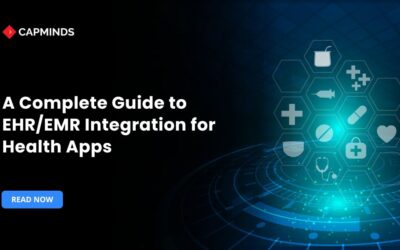10 Workflow Design Best Practices for Specialty-Focused EMR Development
Digitizing paper procedures is only one aspect of designing workflows for EMR with a specialization focus. Every specialty, from dermatology to cardiology, has specific needs, treatment plans, and contacts with patients that need to be represented in the EMR.
A one-size-fits-all strategy frequently results in poor adoption, physician burnout, and inefficiency. Instead, in order to construct systems that are user-friendly, effective, and in line with clinical realities, specialty-focused EMR development must adopt workflow design best practices.
In this blog, you’ll know the workflow designs best practices for specialty EMR development, which helps providers, software developers enhance their workflows.
1. Understand Your Specific Needs
Workflows vary by specialization. An ophthalmologist needs image management for retinal scans, whereas a cardiologist could need ECG integrations. A detailed grasp of these issues forms the basis of specialty-focused EMR development.
To do this, developers and medical institutions need to:
- Interview staff members and specialized doctors.
- Step-by-step clinical workflow mapping
- Determine the main bottlenecks and pain areas.
Redundancies can be removed, and clinical accuracy can be supported by practices by customizing the EMR to meet specialty-specific needs.
2. User-Centered Design Priority
User-centered design is crucial; it is not an alternative. Since providers, nurses, and technicians are the main EMR users, every design choice should be based on their requirements.
A user-centered strategy consists of:
- Clinicians are involved in prototype testing early on.
- Loops of iterative feedback where people confirm the effectiveness of the workflow.
- Opportunities for customization so that healthcare professionals can adapt the EMR to their preferences.
This results in reduced burnout, fewer usability issues, and increased adoption rates. Clinicians may concentrate on patients rather than screens when EMRs are easy to use.
3. Simplify the Data Entry Procedures
One of the most time-consuming jobs in the medical field is data entry. According to research, physicians spend over half of their time on EHR activities rather than patient care. EMRs with a specialty focus need to address this problem directly.
Among the best methods for making data entry more efficient are:
- Voice recognition for automated charting and dictation.
- Clever templates that use specialization to pre-fill common fields.
- Checkboxes and drop-down options allow for quicker input.
- Data from prior visits is automatically filled in.
A pediatrician entering immunization records shouldn’t have to type the same information over and over. Accuracy is improved, and repetitive labor is decreased with intelligent automation.
4. Utilize Templates Tailored to Your Specialty
Important features are frequently overlooked by generic EMR templates. Specialty EMRs ought to have customized templates based on clinical guidelines.
- Orthopedic templates should include joint mobility tests, fracture types, and surgical follow-up details.
- Lab results like TSH, HbA1c, and cortisol levels must be the main emphasis of endocrinology templates.
Advantages of Specialty-specific templates
- Standardized Documentation from all suppliers.
- Adherence to the rules for the specialty.
- Increased precision in billing and reimbursement coding.
Giving doctors the ability to alter templates increases adaptability and guarantees that workflows continue to meet changing clinical requirements.
5. Integrate Imaging and Diagnostic Tools
Diagnostic and imaging tools are important to the provision of care in many areas. To consolidate all patient data into a single record, EMRs must offer smooth integration.
- Integration of radiology with RIS and PACS.
- Cardiology connects to Holter monitors and ECG devices.
- Importing retinal images from fundus cameras for ophthalmology.
Decision-making is accelerated, silos are removed, and human data entry is decreased when diagnostic results are automatically uploaded and compared with patient information.
Related: 7 Mistakes to Avoid in Custom EHR Development (And How to Fix Them)
6. Automate Typical Processes
The design of the modern EMR workflow heavily relies on automation. To increase productivity, a lot of repetitive processes, like lab ordering, scheduling, and reminders, can be automated.
Instances of automation in specialized fields include:
- Oncology – Chemotherapy cycles that are automated to follow treatment guidelines.
- Dermatology – After procedures, follow-up reminders for skin exams.
- Orthopedics – Automated scheduling of therapy following surgery.
EMRs reduce human error, save time, and guarantee consistent care delivery by automating repetitive operations.
7. Compatibility with Different Systems
No EMR functions in isolation. Interoperability must be considered in the design of specialty-focused EMRs to guarantee seamless communication with external physicians, pharmacies, and labs.
Secure and dependable data communication is ensured by adhering to standards such as HL7, FHIR, and DICOM.
- Instead of logging into a different portal, a nephrologist should be able to access lab findings from within the EMR.
- Treatment plans should be easily shared between primary care physicians and oncologists.
Interoperability guarantees that clinicians always have the most up-to-date patient history, minimizes duplication, and improves care coordination.
8. Build with Growth and Scalability
Specialty practices are ever-evolving; they develop, combine, and offer new services. An EMR that is created today needs to be adaptable enough to grow in the future.
Among the best strategies for scalability are:
- Cloud-based design for effortless growth.
- Processes that are modular so that new features or specializations can be added without causing any problems.
- Support for expanding practices with large patient loads.
Healthcare businesses can guarantee long-term sustainability and prevent expensive reimplementations by preparing for scalability.
9. Specialty-Specific Insights to Improve Decision Support
One of the most strong components of modern EMRs is clinical decision support. Alert fatigue may result from generic alerts. CDS needs to be customized for the specialty to be effective.
- Cardiology – Warning signs of elevated troponin levels.
- OB-GYN – Prenatal diabetes screening reminders.
- Endocrinology – Alerts for people with diabetes who have abnormal HbA1c readings.
Specialty-specific decision support lowers medical errors, enhances patient outcomes, and keeps providers in line with best practices.
10. Constantly Train and Assist End Users
If people are unable to utilize the EMR efficiently, even the most advanced one will not work. In order to guarantee that providers learn workflows that reflect their daily requirements, training must be specialty-focused rather than generic.
- Training for staff, nurses, and doctors based on roles.
- Refresher courses to gradually solidify information.
- Dedicated helpdesk assistance to promptly fix workflow problems.
Ongoing training helps doctors get the most out of their EMR investment by enhancing adoption and boosting confidence.
Transform Specialty EMR Workflows with CapMinds Services
At CapMinds, we specialize in building custom EHR/EMR solutions designed to meet the unique needs of every specialty practice. From dermatology to cardiology, our service approach ensures that workflow design is intuitive, scalable, and aligned with real clinical use cases.
With our end-to-end digital health tech services, your practice gains not just software, but a partner in care transformation.
Our Key Services Include:
- Custom EHR/EMR Development – Tailored solutions built around specialty workflows.
- Specialty-Focused Workflow Design – Optimized clinical flows to reduce burnout and improve efficiency.
- System Integrations – Seamless interoperability with labs, pharmacies, imaging tools, and external providers.
- Automation & Decision Support – Smart processes and alerts to improve patient outcomes.
- Scalable Cloud Solutions – Future-ready platforms that grow with your practice.
With CapMinds Services, you get more than an EMR; you get a strategic partner committed to helping you deliver high-quality care while boosting productivity.
Ready to redesign your specialty EMR workflows? Connect with CapMinds today!




